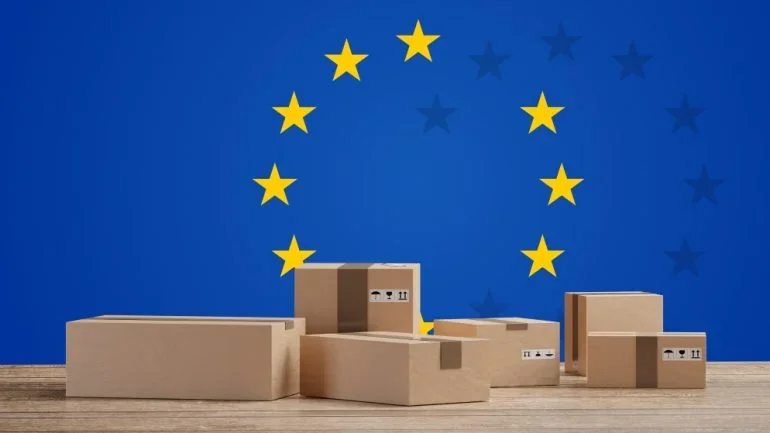Rising e-commerce packaging costs and upcoming EU regulations force UK businesses to reassess their strategies.

This article draws on insights from Jo Bradley, Business Development Manager at Sparck Technologies.
As e-commerce continues to evolve, UK businesses face increasing pressures from rising packaging costs and new regulatory frameworks introduced by the European Union (EU).
The changing landscape highlights the need for careful consideration of packaging strategies to remain competitive and compliant.
The shift in packaging costs
Packaging is often viewed through two lenses. For many companies, the focus is primarily on product packaging, which is considered crucial for marketability and customer appeal.
Conversely, transport packaging, such as cardboard boxes and void fill, is frequently seen as a minor expense within the broader logistics costs. However, this perception is shifting, particularly for e-commerce businesses where the effectiveness of packaging is becoming more vital.
Recent trends show a decline in online retail volumes following the initial surge during the Covid-19 pandemic. In response, packaging material manufacturers have reduced their output.
As demand begins to rise again, particularly for smaller packages, the ratio of packaging material to actual goods is likely to increase, which could lead to higher costs.
This environment is complicated by a tightening supply of materials, which adds further pressure on prices.
Understanding the new regulations
The EU’s new Packaging & Packaging Waste Regulations (P&PWR) are set to take effect around early 2025, with a transition period of approximately 18 months.
While the UK has exited the EU, any UK businesses trading within the EU must comply with these regulations. The P&PWR aims to significantly reduce packaging waste, focusing especially on decreasing the use of plastics and promoting sustainable practices.
Key provisions of the regulations include mandates to minimise the weight and volume of packaging, ensuring it is only as substantial as necessary for functionality.
By January 2030, a new requirement will stipulate that void space in packaging cannot exceed 50% of the package’s total size.
This could present challenges for companies that routinely ship non-standard shapes and sizes, as many tend to use oversized boxes for convenience, leading to potential non-compliance.
Adaptation and innovation in packaging solutions
To navigate these changes, businesses need to rethink their packaging strategies. Manual packing processes often lead to the use of boxes that are larger than necessary, which is not sustainable in terms of labour and materials.
Automated packing lines typically rely on a limited range of box sizes, creating inefficiencies and increasing the likelihood of oversized packages.
Innovative solutions are emerging to address these challenges. Automated 3D packing systems offer a more flexible approach by creating custom-sized boxes tailored to individual orders.
Technologies such as Sparck Technologies’ CVP Impack and CVP Everest use advanced scanning to determine the optimal packaging size, potentially reducing cardboard consumption by over 30% and eliminating the need for additional void fill materials.
This shift not only addresses rising costs but also aligns with the sustainability goals outlined in the P&PWR.
With the P&PWR set to impose stringent requirements, the urgency for compliance is clear. While the specifics of enforcement and penalties remain to be defined, it is expected that marketplaces will bear the responsibility for ensuring their vendors meet these new standards.
As such, UK businesses should start preparing for the regulatory landscape that lies ahead, ensuring that they remain competitive while adhering to evolving packaging requirements.
Source from Packaging Gateway
Disclaimer: The information set forth above is provided by packaging-gateway.com independently of Chovm.com. Chovm.com makes no representation and warranties as to the quality and reliability of the seller and products. Chovm.com expressly disclaims any liability for breaches pertaining to the copyright of content.





 বাংলা
বাংলা Nederlands
Nederlands English
English Français
Français Deutsch
Deutsch हिन्दी
हिन्दी Bahasa Indonesia
Bahasa Indonesia Italiano
Italiano 日本語
日本語 한국어
한국어 Bahasa Melayu
Bahasa Melayu മലയാളം
മലയാളം پښتو
پښتو فارسی
فارسی Polski
Polski Português
Português Русский
Русский Español
Español Kiswahili
Kiswahili ไทย
ไทย Türkçe
Türkçe اردو
اردو Tiếng Việt
Tiếng Việt isiXhosa
isiXhosa Zulu
Zulu